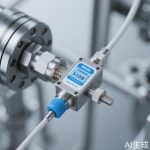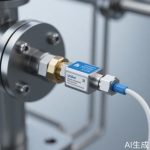In the rapidly evolving landscape of industrial automation and precision engineering, inductive displacement sensors have emerged as unsung heroes. These devices, which measure position and displacement without physical contact, are revolutionizing how industries monitor and control machinery. By leveraging electromagnetic induction, they offer unparalleled accuracy, reliability, and durability in environments where traditional sensors might falter. From automotive manufacturing to aerospace applications, inductive displacement sensors are setting new benchmarks for performance and efficiency.
At their core, inductive displacement sensors operate on a simple yet ingenious principle. They generate an alternating magnetic field through a coil, and when a conductive target moves within this field, it induces eddy currents. The sensor then detects changes in the magnetic field, converting these variations into precise displacement measurements. This non-contact method eliminates wear and tear, ensuring longevity and consistent performance even in harsh conditions filled with dust, oil, or extreme temperatures.
One of the standout advantages of these sensors is their robustness. Unlike optical or capacitive sensors, inductive variants are immune to environmental contaminants. This makes them ideal for heavy industries such as metalworking, where coolant fluids and metallic debris are commonplace. Additionally, their ability to function in high-temperature settings—often up to 200°C—extends their utility to applications like engine testing and turbine monitoring, where precision is non-negotiable.
Beyond industrial settings, inductive displacement sensors are making waves in consumer electronics and medical devices. In smartphones, they ensure seamless haptic feedback by measuring minute movements of components. In medical imaging equipment, they contribute to the accuracy of robotic arms used in surgeries, enhancing patient safety and outcomes. Their versatility and reliability make them a cornerstone of innovation across sectors.
Looking ahead, the future of inductive displacement sensors is bright. Advances in materials science and signal processing are paving the way for even smaller, more sensitive models. Integration with IoT and Industry 4.0 platforms will enable real-time data analytics and predictive maintenance, reducing downtime and boosting productivity. As industries continue to prioritize automation and precision, these sensors will undoubtedly play a pivotal role in shaping the technologies of tomorrow.
In conclusion, inductive displacement sensors are more than just components; they are enablers of progress. Their combination of accuracy, durability, and adaptability makes them indispensable in today’s tech-driven world. Whether you’re an engineer designing cutting-edge machinery or a business leader seeking to optimize operations, understanding and leveraging these sensors can unlock new levels of efficiency and innovation.




Leave a Message